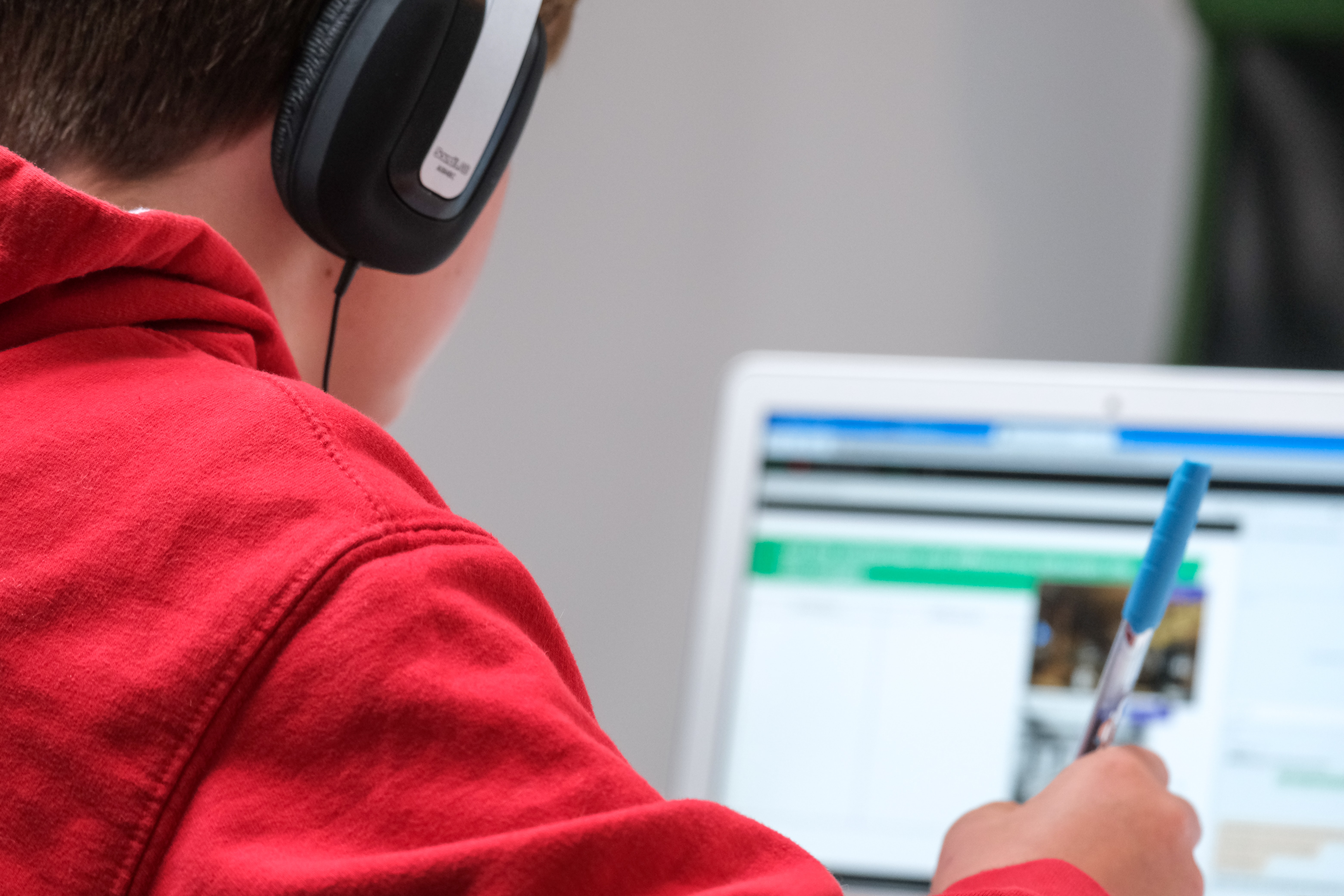Integration of digital technologies in education has been gradually modernising learning experience globally. The COVID-19 crisis has accelerated this process, placing digital technologies at the centre of education and training, and completely disrupting education systems. The proponents of digital education argue that it is characterised by greater accessibility than traditional education. For example, learning materials can be easily downloaded, shared, free of charge. Based on this, the proponents argue that digital education could help in tackling education inequality, supporting students at risk of marginalisation (e.g. due to socio-economic backgrounds, isolated/distant locations, migrants) to access good quality education, and even to mitigate economic inequalities.
However, the above is only one side of the story. The COVID-19 pandemic has highlighted not only the success of digital education, but also that action is still needed to achieve true inclusivity. By examining in particular the challenges students face to engage with digital learning, the following paper asks two important questions. What lessons can be learnt in terms of accessibility of digital education during the pandemic? How can policy-makers support access to digital education in the future?
Accessibility of digital education
The research findings confirm that digital education provides a better access to learning resources, but not for everyone. Education inequality has been accelerating in the past years, especially during the COVID-19 pandemic [1]. Access to education has been conditioned by access to digital technology and high-speed Internet connectivity. Students from low-income households and from less developed areas, where broadband speed tends to be low or electricity supply is interrupted, do not have the means (e.g. technologies) or conditions (e.g. lack of study space) to properly participate in the education process. Similarly, the education establishments with limited financial resources have insufficient digital infrastructure, while their teachers lack training to offer good quality online education. Thus, the pandemic has been exacerbating the digital divide, reinforcing the vicious cycle of poverty and inequality.
Skills, competences and online teaching tools of teachers have been an important factor in accessing good quality digital education. Despite that many teachers did not feel prepared to teach remotely when the pandemic started (e.g. 83% of teachers in Brazil felt anxious and unprepared), pedagogical adaptations of learning materials and methods of teaching have been crucial for ensuring effective transition from traditional to digital education [2]. Digital, tech and communication skills have been key to support teachers in quick adaptation to the “new normal”. Undoubtedly, the crisis has been an exceptional time of learning and a test on adaptability for teachers. The teachers that worked at schools that had been investing in integration of digital technologies prior to the crisis experienced a smoother transition, as online learning platforms and other teaching materials had already been available and familiar to both teachers and students.
Digital skills of students also have had an effect on access to digital education during the COVID-19 pandemic. A broad look at the issue reveals that a lack of necessary skills can manifest in instances of “technophobia” to students. If unaddressed, “technophobia” can result in a psychological state where the student is less motivated to participate in the online learning process diminishing their learning achievements [3]. While this “technophobia” is a horizontal issue that affects students from all backgrounds, there are, unfortunately, student groups that are more susceptible to negative learning experiences and learning outcomes in a digital learning environment.
First, there is a gender gap in student digital skills where female students, particularly in less developed countries, use digital technology less often than male students; therefore, their digital skills are less advanced. This, in part, is related to cultural factors (e.g. gender stereotyping) and negative experiences of girls and women of cyber-bullying, online harassment.
Another group of students that has been lacking digital skills to access education are younger students (enrolled in primary education). They experienced a greater need of intensive teaching support and a supportive learning environment. This to ensure that their learning outcomes from digital education match the outcomes expected in a classroom environment [4]. The report of the JRC highlighted that during the COVID-19 pandemic more affluent families were able to better or more easily support their children in education and help to develop digital skills, as parents could enjoy flexible working arrangements [5]. Once again, the economic factor has been strongly linked to access and quality of digital education.
The UN reports that among other student groups that struggled to access education during the pandemic are migrants and refugees, due to lack of language skills, and students with special educational needs (e.g. disabilities). On both accounts instead of serving the purpose of creating pathways for students to integrate with society, digital education has been further enabling the barriers to those pathways, as it failed to adjust to students’ needs.
The development of digital skills is crucial not only for the current learning process, but also for engagement in life-long learning and for successful integration in the labour market, given an immense role of digital technologies in the world. Learning losses threaten to extend beyond this generation and erase decades of progress. According to preliminary estimates, around 23.8 million children and youth (from pre-primary to tertiary education) may drop out or not have access to school due to the pandemic’s economic impact alone [6].
While the pandemic has, in many ways, reinforced the division in access to learning, the disruption to the education systems, and the flexibility resulting from countries trying to rapidly respond to changing conditions, offers a window of opportunity to address these challenges.
How can policy-makers support access to digital education in the future?
Regardless of how long the crisis will last, it is clear that the role of digital technologies in education is unlikely to diminish when the pandemic subsides. In light of great unpredictability related to COVID-19, there are three scenarios of how the future of education might look like:
- Mostly remote, digital education (assumption: the COVID-19 continues to infect the population)
- Hybrid education (assumption: the COVID-19 is partially under control and preventive measured are taken at education institutions)
- On-site education with a high degree of digital technology integration (assumption: the COVID-19 has been taken under control)
Under all three scenarios the policy makers should ensure that all students and education establishments have access to digital technologies and have sufficient digital infrastructures. Particular attention needs to be given to the student groups that are vulnerable to digital exclusion (as listed in this article). The use of digital technologies should always come with a view to reduce barriers to education, not to create new or enforce existing ones. In the short-term, investment in the development of nation-wide digital education platforms and online materials is needed to ensure equal access to education resources. However, in the long-term, more fundamental changes to education infrastructures are needed. Integration of novel technologies, such as artificial intelligence and machine learning, should support teachers by providing analysis on performance and wellbeing of children at school.
Under scenario #3, the education institutions should assess how and for what purposes digital technologies should be utilised. It is advisable to launch a discussion on the use of digital technologies, on usefulness of different learning materials and teaching methodologies at schools between teachers, students and parents (for children that are undergoing primary education). Using the data on educational outcomes of students during the pandemic, teachers can analyse in what cases (e.g. which topics, subjects) digital education has been effective. The sharing of experiences and lessons learnt between schools should lead to the formulation of guidelines for education institutions on how to best integrate digital technologies in the education process.
Under scenario #1 and #2, a significant investment should be made in the development of online learning platforms, learning/teaching materials and teaching methodologies, targeting areas or student groups that have been identified as particularly vulnerable. For example, prioritising primary schools if the education outcomes of students have significantly declined compared to pre-COVID period. Some research has shown that the learning of complex topics or the development of communication and language skills through online mode of education has been challenging for many students, due to limitations of social interaction in a virtual environment. Hence, the education institutions should assess suitability of teaching methods for different topics/skills and develop appropriate innovative teaching methods, based on feedback of students. In addition, national methodologies that outline the curriculum for different subjects should be critically examined to align study subjects with digital technologies.
The set of skills and competences of teachers should be aligned to the realities of working both in traditional classrooms as well as digital learning environments. In this regard, the COVID-19 pandemic presents an opportunity to critically examine what digital competences teachers need; whether to acquire or to improve. The critical consideration is that such exercises should not be about shaming or discrimination. While this article focused more on the digital divide in different student groups, teachers are no less susceptible to discrimination or “technophobia” due to their digital skills level. Long-distance teaching and learning calls for a new understanding of the teacher-student relationship, stressing the need of high flexibility in teaching methods, adaptability to learning needs of students and effective engagement with students digitally. For students, digital skills should become part of everyday curriculum even at the primary education level. Children grow in a highly digitised society which makes it all the more necessary for the education system to support acquisition of skills that allows students to engage with digital education.
Our (Technopolis Group) work on such projects as “Enhancing learning through digital tools and practices”, led by Ecorys, and “Pathways to Inclusive Labour Markets” highlights that an urgent adjustment of education systems and their actors is needed. As part of our work in the Africa Europe Innovation Partnership we have setup the EdTech challenge in order to increase access to quality education (SDG4) through collaboration. The future outlook for education should result in a harmonisation of digital and traditional learning, and in equalisation of education opportunities for all. Otherwise, many people will lose their passport to the future.
[1] Vegas E., Winthrop R. (2020). Beyond reopening schools: how education can emerge stronger than before COVID-19. Available at: https://www.brookings.edu/research/beyond-reopening-schools-how-education-can-emerge-stronger-than-before-covid-19/
[2] Barron M., Cobo C., Munoz-Najar A., Sanchez Ciarrusta I. (2021). The changing role of teachers and technologies amidst the Covid 19 pandemic: key findings from a cross-country study. Available at: https://blogs.worldbank.org/education/changing-role-teachers-and-technologies-amidst-covid-19-pandemic-key-findings-cross
[3] OECD. (2019). The role of education and skills in bridging the digital gender divide: evidence from APEC economies. Available at: https://www.oecd.org/sti/education-and-skills-in-bridging-the-digital-gender-divide-evidence-from-apec.pdf
[4] Loeb S. (2020). How effective is online learning? What the research does and doesn’t tell us. Available at: https://www.edweek.org/technology/opinion-how-effective-is-online-learning-what-the-research-does-and-doesnt-tell-us/2020/03
[5] Sostero M., Milasi S., Hurley J., Fernández-Macías E., Bisello M. (2020). Teleworkability and the COVID-19 crisis: a new digital divide?, Joint Research Council, No. JRC121193.
[6] United Nations. (2020). Policy Brief: education during COVID-19 and beyond. Available at: https://www.un.org/development/desa/dspd/wp-content/uploads/sites/22/2020/08/sg_policy_brief_covid-19_and_education_august_2020.pdf





